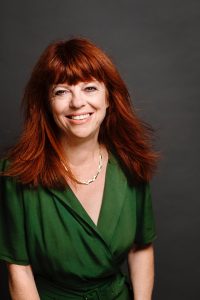(aus dem Englischen übersetzt) Kreative Autor:innen arbeiten mit Grenzen und mit Balance. Es ist ein Balanceakt zwischen Kunst und Handwerk – das Handwerk zu beherrschen und die Kunst zum Ausdruck zu bringen. Ohne Handwerk droht Verwirrung und eine willkürliche Herangehensweise an die Kunst – was manchmal funktioniert, aber meistens nicht. Ohne Kunst ist das Produkt abgeleitet, offensichtlich und banal.
Es gibt ein Gleichgewicht zwischen Kunst als Ausdruck und Kunst als Kommunikation.
Es gibt ein Gleichgewicht zwischen dem Vorantreiben unserer Kunst in neue Formen und dem Festhalten an den vermeintlich „alten Regeln“, so dass wir in ihnen erstarren. Es gibt ein Gleichgewicht zwischen „immer innerhalb der Linien malen“ und „tun, was man will“.
Ich glaube nicht an Regeln und Formeln, aber ich glaube an Konzepte und Ideen. Ich glaube: „Du kannst alles tun, was du willst, wenn du es kannst!“ Das bedeutet, dass man jedes Mal, wenn man von dem abweicht, was andere Leute als Regeln bezeichnen, einen Ausgleich schaffen muss und sich bewusst sein muss, was man tut und warum man es tut und wie man es umgehen kann, damit es funktioniert. Wir werden also über einige dieser heimtückischen Techniken sprechen, die gut zu kennen sind und die unserer Kunst dienen können.
In diesem 30-minütigen Vortrag werden wir uns mit den folgenden Themen und Fragen befassen:
1. Momentum-Probleme: Wie hält man eine Geschichte in Gang, wenn man den Schwerpunkt auf Episoden und Entwicklung statt auf Ergebnisse und Auflösungen legt?
2. Fokus- und Orientierungsfragen: Wie hält man den Fokus aufrecht, wenn man den Schwerpunkt eher auf emotionale Momente und Transformation als auf Handlungspunkte legt?
3. Strukturelle Fragen: Welche Aspekte der Drei-Akt-Struktur sind eher hilfreich als hinderlich, und wie können diese eingebracht werden, während man scheinbar „alle Regeln bricht“? (Wenn Sie Zeit haben, sehen Sie sich den Film Luther mit Joseph Fiennes an, bei dem ich als Drehbuchberaterin fungierte und im dritten Akt zwei der wichtigsten „Regeln“ beim Drehbuchschreiben brach. Ich werde kurz darauf eingehen, welche das waren und wie wir das Problem kompensiert haben, das sich daraus ergeben hat).
4. Aktionspunkte: Wie kann man Aktionspunkte reduzieren, um das Publikum nicht zu erschlagen (à la Stirb Langsam) und sie trotzdem für die Klarheit nutzen? Wie viel Abstand wollen Sie zwischen Ihrem Publikum und Ihrer Handlung?
5. Quellen und Wissen: Wie suchen Sie nach Quellen und arbeiten mit dem Wissen und den Erkenntnissen anderer Künstler, ohne sich von ihnen in ihre eigenen Formeln pressen zu lassen?
Es könnte hilfreich sein, einen Blick in mehrere meiner Bücher zu werfen, die diese Fragen auf unterschiedliche Weise behandeln: Making a Good Script Great, das sich mehr mit konventionellen Strukturen beschäftigt. Advanced Screenwriting, das sich mit unkonventionellen Strukturen befasst. Making a Good Writer Great, das sich mit dem kreativen Prozess befasst. Und das Kapitel über den Film Crash in And the Best Screenplay Goes to – Learning from the Winners.
> English Version
